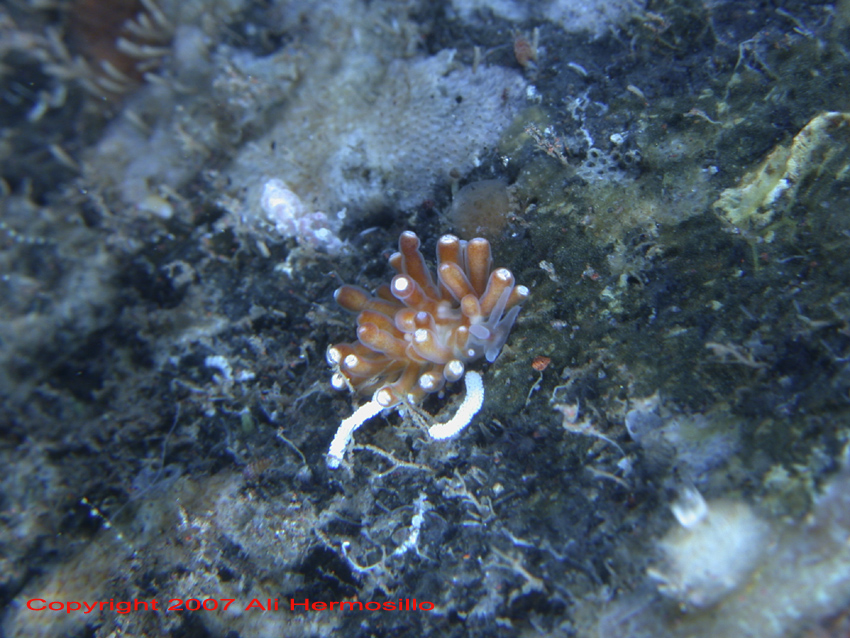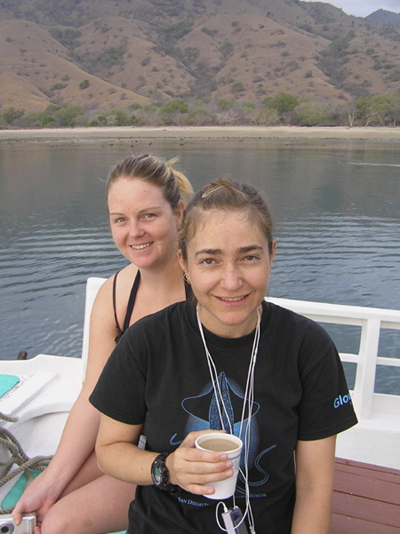 |
Phyllodesmium sp.
Photo courtesy of Ali Hermosillo
Seraya Resort,Bali, Indonesia
Oct. 2007
A great diving spot in Bali is Seraya. I thought it was nudibranch heaven, but hear from seasoned Bali divers who have been there many times in the past that the pressure of so many divers and photographers has decimated the site considerably and that it is not even the shadow of what it used to be.
It is very sad this happens, and of great concern that this is not even by far the only place such thing is observed. Diving is supposed to be a low impact touristic activity, but the dive guides know they need to find the critters for the photographers in order to get a good tip, this results in guides that move, push and shove poor little animals around causing disturbances to the habitats. Having badly weighted photographers kicking and laying on the reef continuously can not help either. We kept hearing from guides and photographers that the critters are simply gone, not there anymore.
Even so, if Seraya was not great, it was still very good (specially for
me
since it was my first time there), and we managed to find many
interesting
critters there. One of them was this aeolid, for the looks of it a
Phyllodesmimum .
It lives in the underside of rocks and we saw quite a few of them. The
resemblance it holds to an anemone is remarkable, the rhinophores are
small
and the cerata are pretty large compared to the size of the body, this
makes
it even harder to tell it is a nudibranch at first sight. Of course the
white egg mass helped a lot and it turned out to be on the top of the
interesting finds for our trip.
Puerto Vallarta, Mexico
Jan., 2008
Send Ali email at gueri25@hotmail.com
Oct. 2007

|
